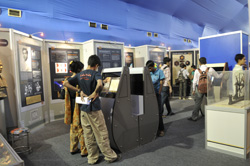Science for everyone, every day
It is important for society to attain an understanding of science in a practical way that can be applied to daily life. The Italian Emilia-Romagna region has been bridging the gap between science and citizen: it was home to the 'Everyday science 2009. Researchers and research in everyday life' (Edscience 09) project, and the Researchers' Night initiative in September 2009. Several local universities, research centres and municipalities contributed to the initiative, which organised public events across the region over three days. It showed how researchers and their work are relevant to the everyday world we live in, and how this contributes to the improvement of citizens' daily life. The Researchers' Night in Emilia-Romagna was held in Bologna and seven other towns in the area. The initiative featured experiments, demonstrations, exhibitions, guided visits, open laboratories, museums, science cafes, conferences, shows and even live music events. Around 400 researchers participated in these public events, exchanging information with attendees in a setting that included testimonials, actors, dancers and musicians. Over 10 000 visitors attended these events. The initiative aimed to attract as many people as possible and was promoted through an elaborate awareness campaign that included, among others, a website and the social and traditional media (press events, article publications, researcher interviews, a radio campaign and TV ads). Schools, teachers and graduates were also targeted through different channels. A questionnaire was made available before, during and after the multiple events, as well as through the project website, to collect feedback. Over 550 questionnaires were completed and processed. Results revealed that the three-day event was highly appreciated and that similar events would be welcomed; it improved researchers' public image through an understanding of their work and stimulated young people to consider embarking on scientific careers. Similar events in other regions and beyond may increase the general public's appreciation of science and help the younger generation discover new horizons, ultimately having a positive socioeconomic impact.



